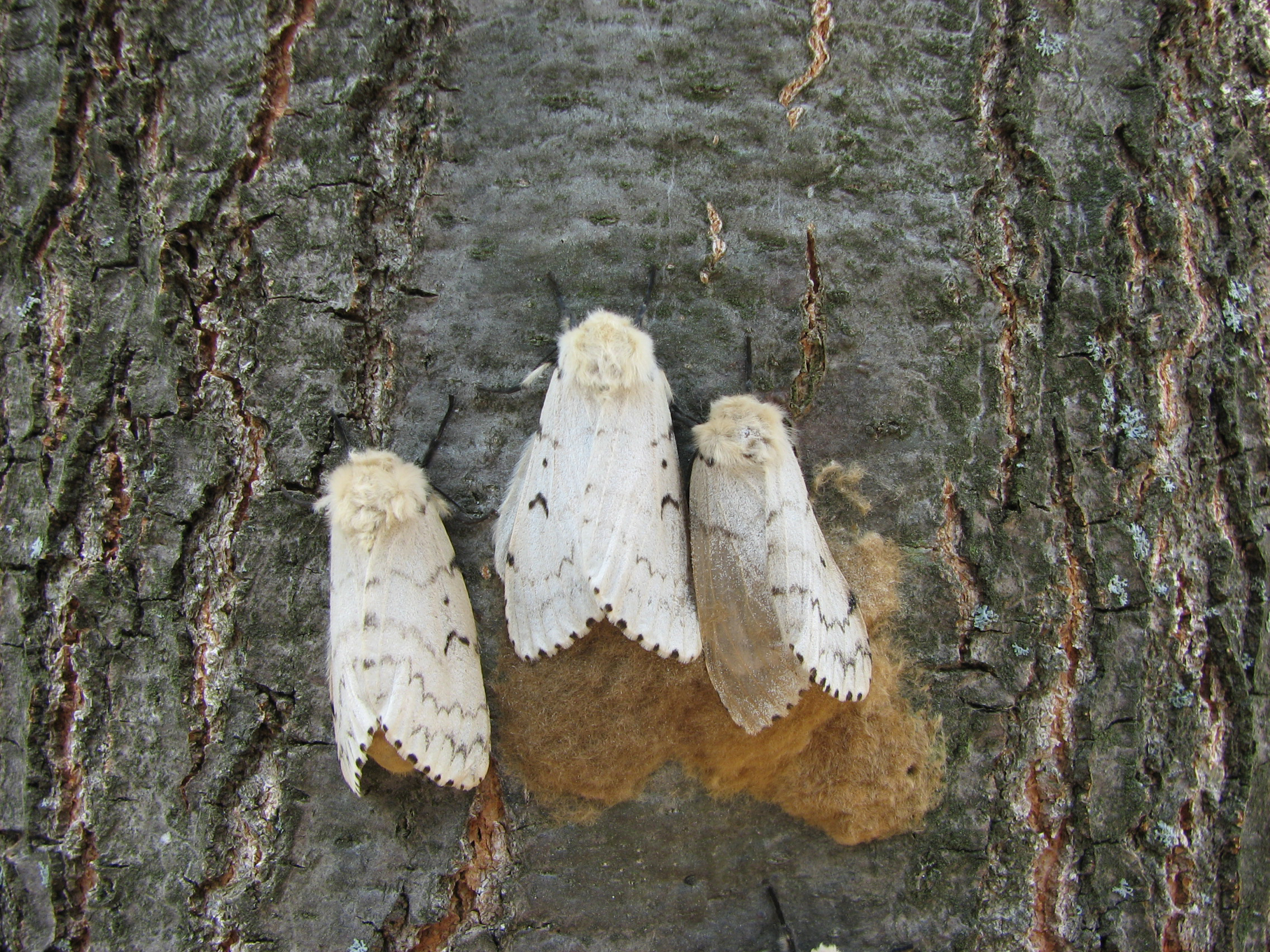Aphids
Aphids are small insects that feed on foliage.
They’re very small, often only a millimeter long. They suck the juices out of infested plants.
Their feeding will often distort the leaves. While feeding, they leave a sweet substance, known as honeydew. Honeydew often gets moldy and turns black. This often makes leaves and branches look like they’re covered in soot. Therefore, this “sooty mold” is a very noticeable symptom of aphid infestations. Also, since the honeydew contains sugars, ants will often be attracted to heavily infested plants.
Lacebugs
Lacebugs feed on the underside leaves of andromeda, rhododendrons, and other broadleaf evergreens.
They get their name by the distinctive lacy pattern of the wings on the adults.
The young, or larval stage, are wingless. They are the damaging stage of this insect.
Heavily infested plants will have foliage that is off-color.
Spruce Spider Mites
Spruce spider mites attack foliage of spruce, fir, arborvitae, and other needled evergreens.
They are very small, often less than a millimeter in size, and are hard to see. Since they’re in the spider family, one of the signs will be small, very fine webbing.
Severe infestations will result in foliage that appears off-color.
They are most active during the cool, wet spring weather.
Gypsy Moth
Caterpillar
Moth
The gypsy moth is the most infamous tree & shrub insect. Infestations, in the early 1980s, defoliated whole sections of forest in the northeast. The mere mention of gypsy moth presence, on a client’s property, often still brings about a state of panic!
The caterpillar (larval) stage does all of the damage. It feeds primarily on oak trees, but will also feed on maple, birch and other deciduous trees.
It feeds on the foliage, often in large numbers. It spreads from tree to tree by “ballooning.” It drops down on a line of silk and gets blown by the wind to other trees.
It’s a very colorful caterpillar, but turns into a rather dull moth. The moth lays eggs on the bark of trees.
Although the outbreaks are not as severe as they were in the past, heavy infestations can still strip large trees bare. Repeated infestations can kill large trees in a few years.
Eastern Tent Caterpillar
Caterpillar
Egg Mass
The eastern tent caterpillar attacks crabapples and cherries. They build ugly “tents” in the crotches of tree branches to shelter themselves from the cold and will come out to feed on emerging foliage on sunny days in the mid-late spring.
A heavy infestation can defoliate young trees, causing permanent damage, and making the tree more susceptible to the other many insects and diseases that like these plants.
During the winter, a close look at the small branches in trees infested during the past season will have black, shiny egg masses, which are pretty apparent and can be pruned off to reduce the population for the coming season.
For more information regarding insects that may be effecting your trees & shrubs health, please do not hesitate to give us a call, or shoot us an email.







